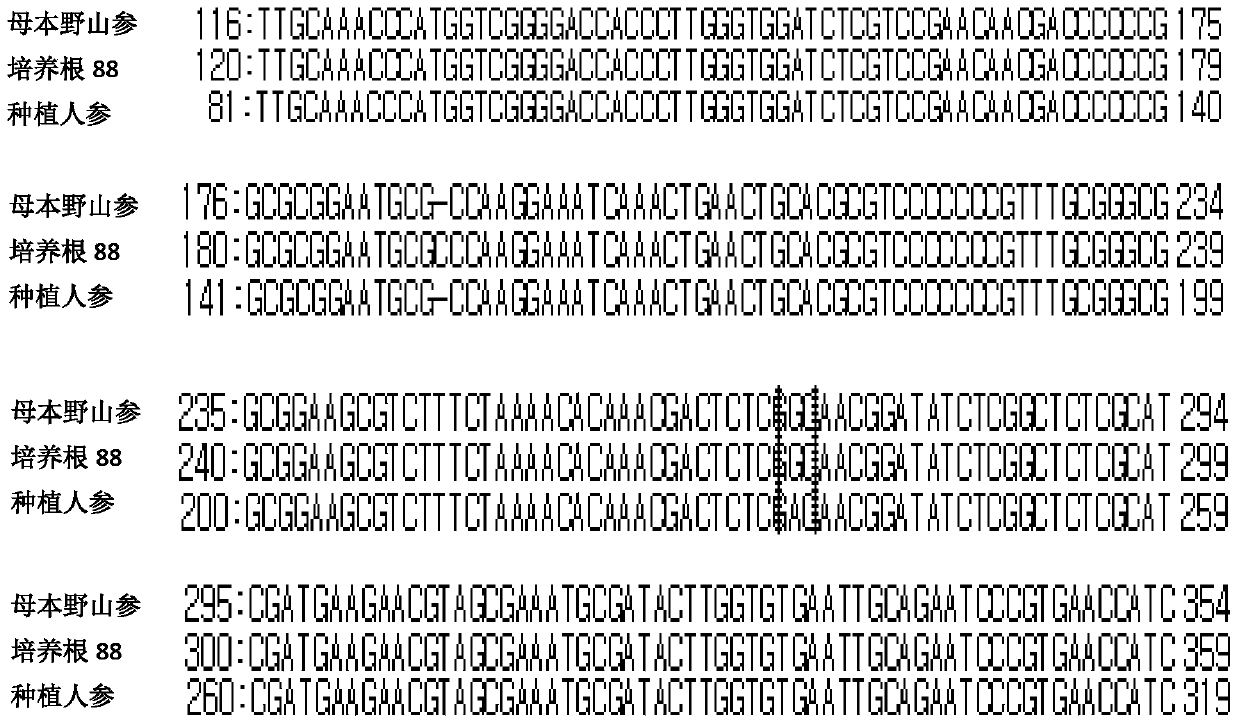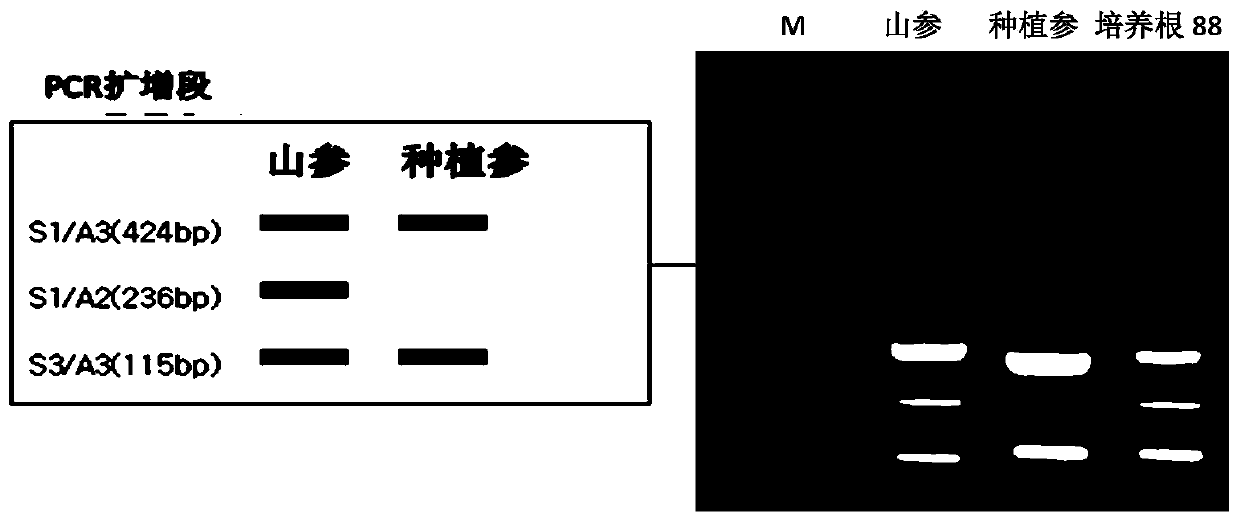A kind of method adopting bioreactor to produce cultured root of wild ginseng
A bioreactor and root culture technology, applied in the field of plant tissue culture, can solve the problems of limiting ginseng production and supply, heavy metal residues, pollution, etc., and achieve the effects of avoiding pesticide residues, regulating blood pressure and blood lipids, and improving production efficiency
- Summary
- Abstract
- Description
- Claims
- Application Information
AI Technical Summary
Problems solved by technology
Method used
Image
Examples
Embodiment 1
[0035] The identification of single nucleotide polymorphism (SNP, single nucleotide polymorphism) on the source of the cultured root of wild ginseng is mainly based on the electrophoresis results of nucleic acid fragments to distinguish it from common planted ginseng, and it is also confirmed that the cultured root of wild ginseng is indeed from the This century wild wild ginseng. Gene sequencing was carried out on three groups of allelic nucleic acid fragments of female wild ginseng, cultured roots and planted ginseng, and it was found that at the same gene allelic site, the nucleic acid sequences of female wild ginseng and the isolated cultured roots of female wild ginseng were guanine, Planted ginseng contains adenine. According to the sequence difference at this point, we designed a PCR amplification strategy. Three nucleic acid fragments can be amplified from the female wild ginseng and cultured roots, while only two nucleic acid fragments can be amplified from planted gin...
Embodiment 2
[0039] The specific production process is:
[0040] 1. Select a bioreactor: an air-lift bioreactor with a tank volume of 18 liters. The air-lift bioreactor is cylindrical in shape and has an internal volume of 18 liters; Placed on the bracket, each bracket can hold 18 reactors, which is called a set of air-lift reactors.
[0041] 2. 0.4g of fresh wild ginseng cultured root was first filled with 120mL of sucrose 4.2g and final concentration of 3ppm of IBA (indole butyric acid) in the Erlenmeyer flask of optimized SH liquid medium for 35 days. , so that the cultured root of wild ginseng is full of the whole triangular flask.
[0042] 3. Obtain a sufficient amount of cultured roots of wild ginseng through simultaneous cultivation in multiple conical flasks, collect 160 grams of wet weight cultured roots and inoculate them into 13 liters of SH standard liquid medium with a concentration ratio of 0.75 times and pre-moist heat sterilization. In the reactor; the temperature range o...
Embodiment 3
[0049] 1. Select the bioreactor: an airlift bioreactor with a tank volume of 18 liters.
[0050] 2. 0.5g of fresh wild ginseng cultured roots were first shaken and amplified for 32 days in the Erlenmeyer flask of the optimized SH liquid medium that was equipped with 120mL. The SH liquid medium contained 4.8 grams of sucrose and the IBA of final concentration 5ppm (ind indolebutyric acid).
[0051] 3. Obtain a sufficient amount of cultured roots of wild ginseng through simultaneous cultivation in multiple conical flasks, collect 180 grams of wet weight cultured roots and inoculate aseptically into a bioreactor equipped with 13 liters of SH medium with a concentration ratio of 0.75 times and pre-moist heat sterilization within; the culture temperature range is strictly controlled at 23-26°C, and the air ventilation range is strictly controlled at 0.10-0.20m 3 / h, the sucrose concentration in the medium is 3.5%, and the IBA concentration is 3.0ppm.
[0052] 4. Cultivate in the ...
PUM
 Login to View More
Login to View More Abstract
Description
Claims
Application Information
 Login to View More
Login to View More - R&D
- Intellectual Property
- Life Sciences
- Materials
- Tech Scout
- Unparalleled Data Quality
- Higher Quality Content
- 60% Fewer Hallucinations
Browse by: Latest US Patents, China's latest patents, Technical Efficacy Thesaurus, Application Domain, Technology Topic, Popular Technical Reports.
© 2025 PatSnap. All rights reserved.Legal|Privacy policy|Modern Slavery Act Transparency Statement|Sitemap|About US| Contact US: help@patsnap.com



